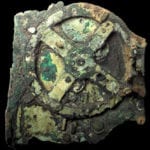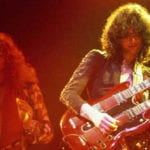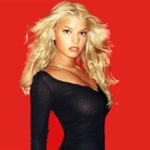 Mysteries
Mysteries  Mysteries
Mysteries  Our World
Our World 10 Extraordinary Efforts to Stop Pollution
 Our World
Our World 10 Incredible Discoveries That Were Announced This Year
 History
History 10 Historical Figures You Didn’t Know Had Tattoos
 Food
Food 10 Head-Scratching Food Fads That Have (Mostly) Come and Gone
 Movies and TV
Movies and TV 10 Sequels That Simply Repeat the First Film
 Technology
Technology 10 Surprising Stories Made Possible by Cutting-Edge Technology
 Animals
Animals 10 Popular Misconceptions about Dogs
 History
History 10 Unbelievably Badass Women from History
 Music
Music 10 Rock Musicians with Impressive College Degrees
 Mysteries
Mysteries 10 Human Capabilities That Scientists Don’t Understand
 Our World
Our World 10 Extraordinary Efforts to Stop Pollution
 Our World
Our World 10 Incredible Discoveries That Were Announced This Year
Who's Behind Listverse?

Jamie Frater
Head Editor
Jamie founded Listverse due to an insatiable desire to share fascinating, obscure, and bizarre facts. He has been a guest speaker on numerous national radio and television stations and is a five time published author.
More About Us History
History 10 Historical Figures You Didn’t Know Had Tattoos
 Food
Food 10 Head-Scratching Food Fads That Have (Mostly) Come and Gone
 Movies and TV
Movies and TV 10 Sequels That Simply Repeat the First Film
 Technology
Technology 10 Surprising Stories Made Possible by Cutting-Edge Technology
 Animals
Animals 10 Popular Misconceptions about Dogs
 History
History 10 Unbelievably Badass Women from History
 Music
Music 10 Rock Musicians with Impressive College Degrees
Top 10 Musicians Who Were Ahead Of Their Time
Searching for origin stories in music is often a ceaseless chase through history. Art is rarely created in a vacuum, meaning musicians – however original their work might be – are inherently influenced by others who came before them. Even the freshest of tunes are, via their composers’ experiences, part homage.
There are, though, certain musicians that stand out as pioneers – ones whose special talents or against-the-grain styles became premonition points for where music was going. Whether this meant furthering a fledgling genre or incorporating new techniques and instruments into existing ones, here are ten examples of musicians ahead of their time, in chronological order.
10 Rock And Metal Musicians Who Killed Someone
10 Charlie Christian Electrifies Jazz
Benny Goodman, the jazz clarinetist whose bandleading skills earned him the nickname “The King of Swing,” was unconvinced. In 1939, his group was among the most popular in the U.S., and he wasn’t keen on fixing something that wasn’t broke. So when an associate asked him to consider adding a talented young musician – an afficionado of the them-fledgling electric guitar – Goodman was disinterested.
Luckily for jazz fans, talent scout John Hammond insisted. During a break at a concert in Beverly Hills, Hammond, as clandestinely as possible, slid Christian onto the stage and into the band. When Goodman noticed, he started playing a ditty called “Rose Room” that he assumed Christian didn’t know. He was wrong, and the epic wail that followed made Christian a band member and, shortly thereafter, the electric guitar a popular mainstay in jazz starting in the early 1940s.
Both “Rose Room” and “Solo Flight”, Christian’s other major showpiece with the Benny Goodman Band, displayed the sort of intuitive swing and fluid single-note runs that came to define the electric guitar’s contribution to the genre. Notably, his playing also was decidedly horn-like, so much so that people who heard (but not saw) him play often thought he was playing the saxophone.[1]
Unfortunately, Christian didn’t get to witness the outsized influence he’d have on jazz. He died in 1942, of tuberculosis, at just 25 years old.
9 John Fahey: Complex Simplicity
The music of acoustic guitarist John Fahey went beyond original and unique; it was flat-out weird. The aural equivalent of leftovers’ night, his style basically threw everything in a pot, simmered their disparate flavors into each other and served it. Starting with a base of folk and blues – in fact, Fahey’s style has been described as American Primitive,[2] a term coined to define a self-taught, minimalist style prominent in those genres – his music incorporated everything from Eastern ragas and cosmic psychedelia to soaring modern classical and eerie funereal notes.
Despite the myriad influences, the sound itself was oxymoronically simple: sometimes invented on the spot, Fahey’s brilliance typically played out on an unaccompanied steel-string acoustic guitar. The complex yet graceful improvisations, which Fahey claims incorporated both psychological and spiritual elements, have made many see him as one of the founders of a sub-genre known as New Age music.[3]
Fahey the man was as strange as Fahey the musician. His dark sense of humor included his adoption of an alter ego, Blind Joe Death (which was also the title of his 1959 debut album), and a habit of schizophrenic song titles like “The Waltz That Carried Us Away And Then A Mosquito Came and Ate Up My Sweetheart.”
8 James Jamerson: The Electric Bassist That Powered Motown
“James who?” you ask? James Jamerson: the long-unheralded electric bass pioneer who, along with his studio band, The Funk Brothers, played on more #1 hit records than The Beatles, The Rolling Stones, The Beach Boys, and Elvis Presley… combined.[4]
You may not recognize James Jamerson’s name… but you recognize James Jamerson. Think of the bass riff that opens up The Supremes’ “You Can’t Hurry Love,” or The Temptations’ “My Girl.” That beautiful booming rhythm that owns the soundstage before the singer starts belting… that’s James Jamerson.
Before coming to Motown, Jamerson was a jazz player – a genre where he perfected a plucky, punchy style of play that helped so many hits pop through the radio waves. As prolific as he was gifted, Jamerson was featured on a broad array of hits from Motown’s heyday but, per the label’s habit of keeping its musicians in the shadows, wasn’t even listed on an album until megastar Marvin Gaye made sure he got credit for “What’s Going On”.
Jamerson was among the first to deviate from his bass-playing contemporaries, who generally stuck to more conventional roots and fifths.[5] By roaming into more adventurous harmonic territory, Jamerson created counterpoint lines with vocalists – an innovation that led to his well-earned nickname: The Hook.
7 Black Sabbath: Metal Pioneers Turned Megastars
It’s tempting to play popularity contrarian and reach back past Ozzy and his bandmates for some arcane examples of now-obscure headbangers. But sometimes the ones that did it first did it well enough that they became megastars; such was the case with Black Sabbath. While deep guitar riffs and scream singing were around before 1970 – Jimi Hendrix, The Who – it was Black Sabbath who, according to music journalist Noah Lefevre, “showed the world what metal was”.[6]
The group’s self-titled debut album – released on February 13, 1970 (purposefully or not, a Friday) – cracked the top 10 on the UK Albums Chart and peaked at #23 on the US Billboard Chart. In fact, the album did so well that its follow-up, Paranoid, was delayed because its predecessor was still selling.
It was worth the wait: per AllMusic’s Steve Huey, Paranoid – which featured legendary hits “Iron Man” and the anti-Vietnam “War Pigs” – was “one of the greatest and most influential heavy metal albums of all time,” which “defined the sound and style of heavy metal more than any other record in rock history.”
Black Sabbath’s immediate commercial success was made more impressive because, in true ahead-of-its-time fashion, the band’s early work received negative reviews from many music critics. This included Rolling Stone, which entirely missed the point of the nascent genre by calling the debut album “discordant,” “velocitized” and “never quite finding synch.” Well, duh.
6 Kraftwerk: 80s Music in the 70s
Plenty of eras have acts that seemed to preview where music is headed. A good example is R.E.M., a band that broke through at the height of 1980s hair band glam rock with a trend-pointing alternative vibe. However, the German band Kraftwerk might be the starkest example of decade-previewing clairvoyance, not because of their outsized talent but rather the era in which they did it.
In 1978, disco was king, and an understandably disgusted music counterculture gravitated to punk rock as its polar opposite; you can’t get much further apart than The Bee Gees and The Ramones. In between was a mix of new wave and traditional rock & roll. Nobody was truly capturing that one remarkable calling card of the 1980s: cheesy, perky pop.
The 70s didn’t really have a Safety Dance moment: a dorky but oddly appealing hit providing a sneak peak of corny-yet-catchy 80s pop. But it did have Kraftwerk – who, despite middling-at-best commercial success,[7] are considered pioneers of electronic music. Above is a particularly weird gem from 1978, called Die Roboter.
Top 10 Criminals That Changed Music History
5 Blondie: Hip-Hop Hero?
Like most genres, hip-hop has many pioneers along its road from underground to mainstream. Arguably the most prominent of these influences was a song that, way back in 1979, helped give the genre its name; this was Sugarhill Gang’s “Rapper’s Delight,” whose opening riff sent fans to record stores asking for “that ‘hip hop’ song.” The anthem peaked at No. 4 on the Billboard Chart, and was lauded by US National Public Radio as among the 20th Century’s most influential songs.[8]
A less likely fanner of the fledgling hip-hop flame was a white girl named Debbie Harry, lead singer of punk-turned-new wave band Blondie. Interestingly, Harry actually had a connection to Rapper’s Delight: in 1978, Blondie was performing with the funk group Chic in New York when several members of Sugarhill Gang began freestyling over Chic’s “Good Times,” whose bass became the hit rap song’s beat.
The next year, Blondie released “Rapture,” credited as the first major hip-hop hit to use original music[9] rather than sampled beats. Powered by Harry’s lilting singing, Rapture also became the first #1 song to incorporate a rap element.
Unfortunately, Harry’s emcee skills make Vanilla Ice look like Biggie Smalls. Per songfacts.com,[10] “Harry’s rap is so goofy that it sounds like she could be mocking the genre.” However, during hip-hop’s early days, the sort of simple, random lyrics like Harry’s “man from Mars eating cars” were typical of the still-evolving art.
4 Schoolly D
Five years after Blondie busted such memorable rhymes as “and you get in your car and you drive real far,” Philadelphia-born Jesse Bonds Weaver, Jr., a.k.a. Schoolly D, gave hip-hop an edgier tone that better reflected the lives of urban minorities in America. Blending impoverished realism with violence, drug use and a dash of sexual bravado, Schoolly D is considered by many the Founding Father of gangster rap.
Among the trio of singles from Schoolly D’s self-titled 1985 debut album was “P.S.K. What Does It Mean?” It meant Park Side Killas, a street gang with which Schoolly D was affiliated. In a storytelling fashion now ingrained in the genre, Schoolly D invites listeners along as he smokes weed, gets laid, and threatens to shoot a “sucka-ass n-gga” trying to kick rhymes as fresh as his.
Several gangster rappers name Schoolly D as an important inspiration, including Ice T, Public Enemy and N.W.A. However, while his subject matter was ahead of its time, Schoolly D’s rap skills were not; typical of the mid-1980s – still very much hip-hop’s infancy – his songs largely comprise simple, often clunkily-cadenced rhymes that don’t hold up to legends like Ice Cube, Biggie Smalls and Tupac Shakur who would soon take gangster rap fully into the mainstream. Schoolly D recorded a total of eight albums, none of which achieved commercial success.
3 Edie Brickell: Seattle by Way of Texas
Perhaps the most unorthodox preview of the 1990s Seattle sound was provided by a woman from Texas. In 1988, alternative rock band Edie Brickell & the New Bohemians released their sophomore album, Shooting Rubberbands at the Stars. The album peaked at #4 in the U.S., and its lead single, “What I Am”, cracked the Top 10 on the US Billboard Chart.
Shooting Rubberbands isn’t exactly grunge, but it certainly isn’t metal or glam rock. It stands proudly genre-less amid its contemporaries, an album’s worth of songs saying “maybe we can be a little more low key and dressed down here.” The video for “What I Am” reinforces this refreshing chillness, featuring Brickell breezing around a simple stage, sans the teased hair, leopard-patterned clothing and pyrotechnics common to videos of that era.
While certainly pioneering, Brickell and her band had good company. That same year, Perry Farrell’s trendsetting band Jane’s Addiction released its first major studio album, Nothing Shocking, featuring the classic hit “Jane Says.” Meanwhile the Red Hot Chili Peppers, though not yet commercially successful, had released three albums by 1987.
2 Rage Against the Machine: Hip-Hop Meets Hard Rock
Like Black Sabbath in the heavy metal genre, Rage Against the Machine is both the first and best band their genre, rock-rap, has ever seen. Of course, considering their contenders in this mashup genre include the earplug-inspiring Limp Bizkit and Lincoln Park, that’s not exactly a controversial statement.
With funk-derived beats, the all-time-great-caliber guitar prowess of Tom Morello[11] and the angry reality rap of frontman Zack de la Rocha, RATM sounded different than anything before it, as relevant as any band during its decade-long run, and flat-out better than any band attempting to combine rock and rap since. Released in late 1992 during the height of the grunge era – and when white youths were starting to buy rap music en masse – the band’s self-titled debut album shot to Number 1 on the U.S. Billboard Chart on the strength of hits like “Killing in the Name,” “Bullet in the Head” and “Take the Power Back”.
It wasn’t just the band’s style that was a stark departure from the Nirvanas and Pearl Jams of the world. Amid a sea of inward-looking alternative music and violent gangster rap, RATM’s calling card was righteous vitriol, with de la Rocha’s inventive wordplay spewing venom against the U.S. government’s treatment of minorities (especially Native Americans), corporate greed and white supremacy. RATM influenced many bands associated with the “Nu Metal” subgenre popular in the mid-to-late 1990s, most prominently Korn.
1 Mann vs (Music) Machine
Save for her stint as singer for the one-hit-wonder 80s band Till Tuesday, Aimee Mann might be the best female musician most people have never heard of. After departing Till Tuesday as a spikey-haired new waver in the spirit of Cyndi Lauper, Mann pivoted to folk-rock and into the musical hinterlands; her first two solo albums, 1993’s “Whatever” and 1995’s “I’m With Stupid,” received critical acclaim but not commercial success.
Mann then did something truly groundbreaking: she told three major labels – Imago, Geffen and Interscope – to go to hell, and not only lived to sing the tale but significantly bolstered her popularity. She became, per the Washington Post, Her Own Mann,[12] a light-rock rebel who started drawing audiences as much for her tea-in-the-harbor defiance than her prowess as a singer/songwriter.
In 1999 – the same year she founded her own label, Superego – Mann was nominated for an Oscar for “Save Me” (above), from the soundtrack for the film Magnolia. Since then, she has released seven solo albums and, defying Father Time as well as convention, gotten better with age: her latest release, 2017’s Mental Illness, won a Grammy for Best Folk Album.
Despite recording exactly zero top ten hits[13] in her career, Mann, who turns 60 this year, still sells out concert halls in her native US and abroad – a rare example of a female artist thriving despite flouting the modern music machine.
10 Crazy Conspiracy Theories Clouding The Music Industry








